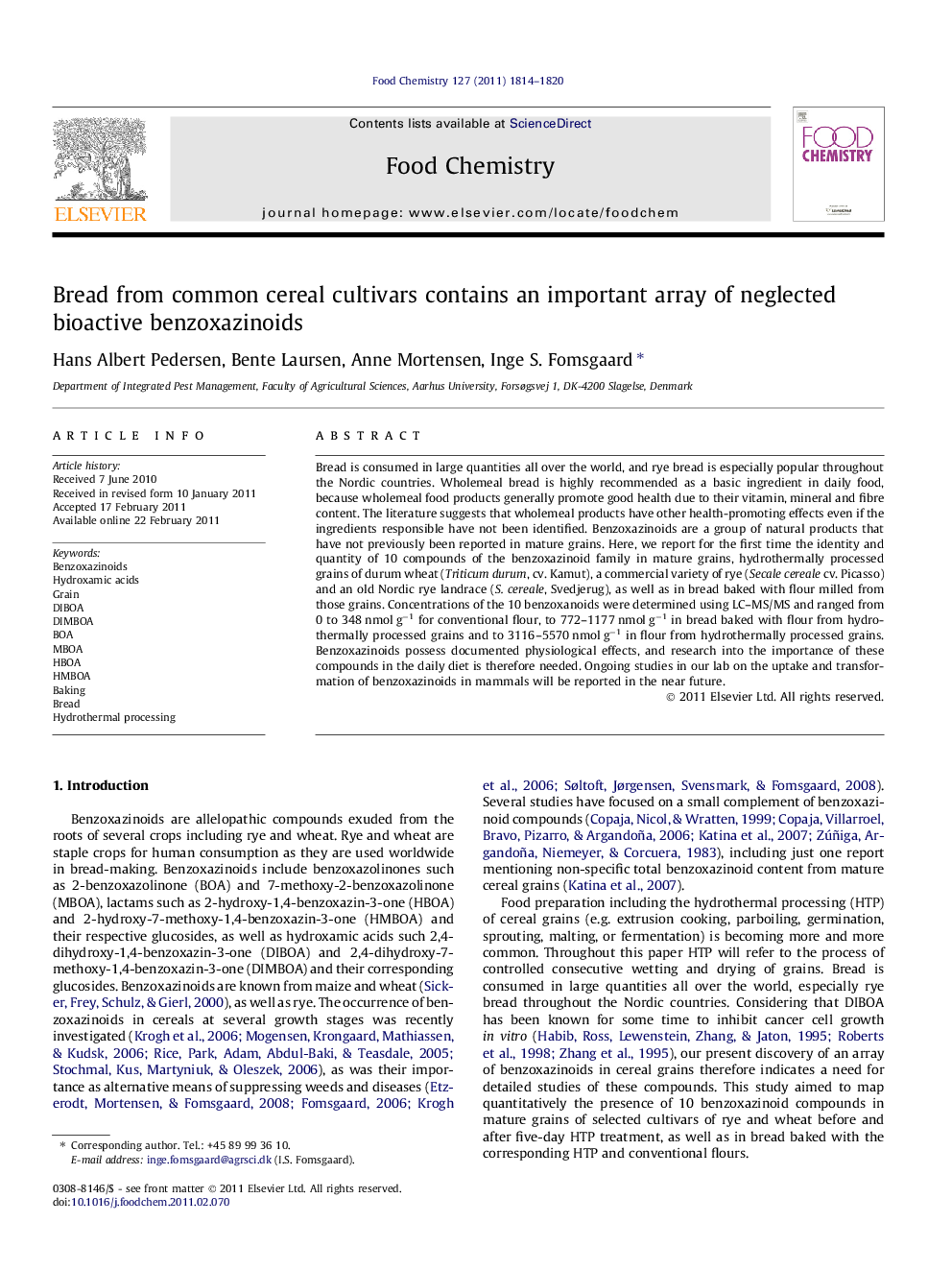| Article ID | Journal | Published Year | Pages | File Type |
|---|---|---|---|---|
| 1184706 | Food Chemistry | 2011 | 7 Pages |
Bread is consumed in large quantities all over the world, and rye bread is especially popular throughout the Nordic countries. Wholemeal bread is highly recommended as a basic ingredient in daily food, because wholemeal food products generally promote good health due to their vitamin, mineral and fibre content. The literature suggests that wholemeal products have other health-promoting effects even if the ingredients responsible have not been identified. Benzoxazinoids are a group of natural products that have not previously been reported in mature grains. Here, we report for the first time the identity and quantity of 10 compounds of the benzoxazinoid family in mature grains, hydrothermally processed grains of durum wheat (Triticum durum, cv. Kamut), a commercial variety of rye (Secale cereale cv. Picasso) and an old Nordic rye landrace (S. cereale, Svedjerug), as well as in bread baked with flour milled from those grains. Concentrations of the 10 benzoxanoids were determined using LC–MS/MS and ranged from 0 to 348 nmol g−1 for conventional flour, to 772–1177 nmol g−1 in bread baked with flour from hydrothermally processed grains and to 3116–5570 nmol g−1 in flour from hydrothermally processed grains. Benzoxazinoids possess documented physiological effects, and research into the importance of these compounds in the daily diet is therefore needed. Ongoing studies in our lab on the uptake and transformation of benzoxazinoids in mammals will be reported in the near future.
Research highlights► Mature dry grains of rye contain hydroxamic acids and other benzoxazinoids. ► Hydrothermal processing of grains increases benzoxazinoid content. ► We quantify benzoxazinoids in flour and bread from dry and processed grains. ► Changes in benzoxazinoid content conform to known chemical and enzymatic processes.
